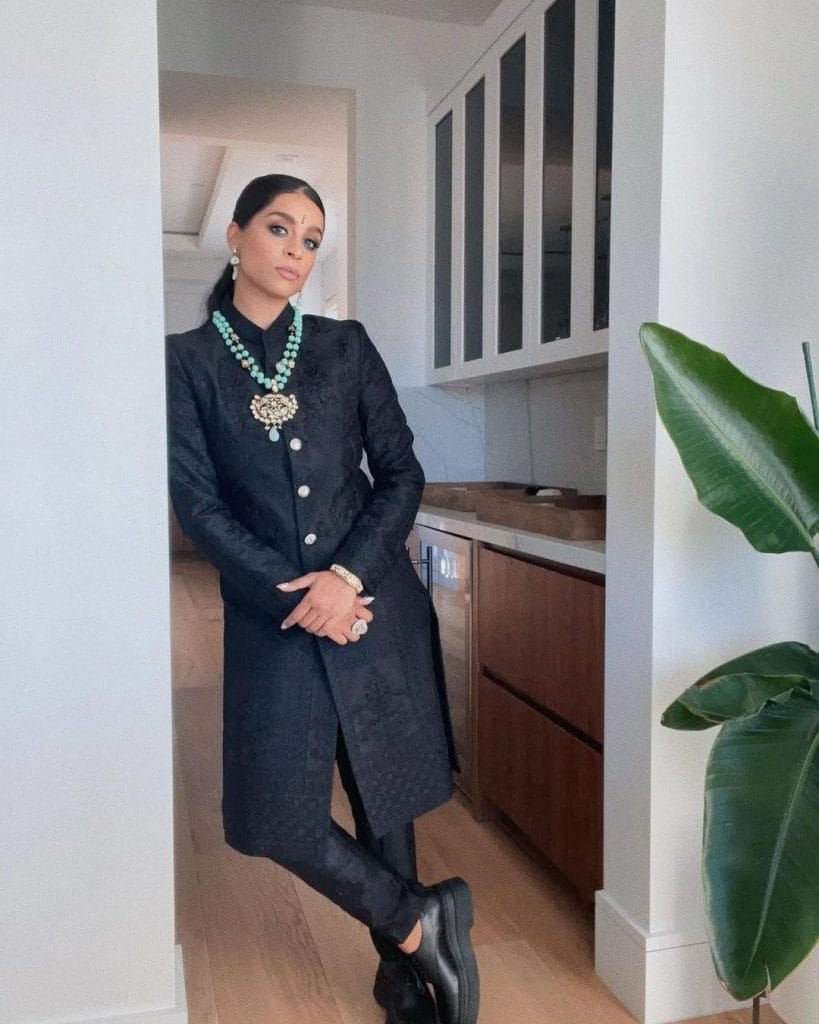Beyond the binary
By Shaan Bajaj
Historically, Indian clothing was not gendered; people from the Indus valley, regardless of gender, draped a long piece of cloth around themselves, similar to the nine yards of a sari. While the draping style varied depending on gender, region, and class, the fabric itself was inclusive. Gendered clothing is a social construct, as a man wearing a skirt or a woman wearing a pair of trousers does not change their gender. Recently, there has been a
push within the industry for more androgynous clothing, to make it inclusive for all. However, gender-fluid clothing goes further than just aesthetics and is a movement to tear down gendered labels and instead celebrate individual identity, freedom, and all genders by creating clothes and a space that can be worn by anyone and everyone.
Here are six desi garments to try. (P.S. all the items in your wardrobe are gender-fluid. Because clothing has no gender; it is not limited to these six items mentioned below.)
KURTA
A kurta or kurti is a simple staple in every Indian wardrobe; the shirt usually falls until
your knees with slits up to your waist, making it diff erent from a dress. You can pair it
with trousers, jeans, leggings, or more.
Shop from: Aayka Fashion
DHOTI
A loose trouser that covers the legs, traditionally tied from a five-yard-long fabric and originally worn by men. The dhoti has now evolved, with pre-stitched dhoti trousers available which are worn by women too. It is classic example of inclusive Indian clothing. Pair it with a kurta for a traditional Indian look, or a crop top for an Indo-Western ensemble.
Shop from: Purushu Arie

SARIS
A sari is a piece of fabric, usually four-nine yards long, and it was traditionally a draping
style worn by women, although nowadays there are styles for men and others too. There are over 100 ways to drape a sari, based on different regions in India. The most common style is to wrap most of it around your waist while draping the remaining fabric over your shoulder, with a blouse underneath.
Shop from: Abu Jaani Sandeep Khosla
SHERWANI
The sherwani is a coat-like garment, with buttons down the front which falls to the knees. Like a kurta, it also has slits on the sides that go up to the waist. Usually paired with a churidar but can be paired with a lehenga for a more feminine aesthetic. It is a popular choice for many men to wear at formal events, whether it is their wedding or a traditional event, but can also be worn by women and others for a bold look that will turn heads.
Shop from: Rohit Bal
ANGRAKHA
An angrakha is much like a robe or a knee-length dress, but the front overlaps and the entire outfit is held in place by tying knots together. Modern varieties now come with buttons. Historically worn by men, but in recent years, it has become a gender neutral
garment.
Shop from: Indya
JEWELLERY
Indian jewellery has long been a sign of wealth, worn by men and women of a certain social standing. Indeed, some of the most beautiful necklaces come from royal Indian treasuries much like the choker Emma Chamberlain wore, that once belonged to the Maharaja of Patiala, Bhupinder Singh. Over the years, Indian men have become accustomed to wearing simple gold chains, while traditional Indian jewellery is mainly associated with women. However, we are witnessing a changing tide, as men are starting to find ways to adorn themselves in gold too.
Shop from: Eurumme











